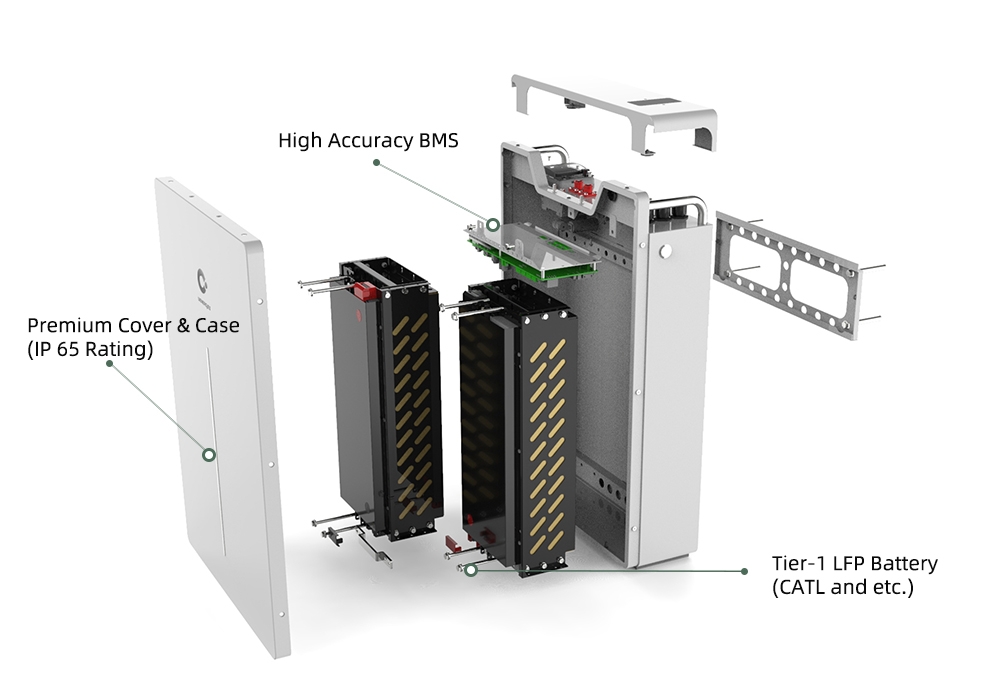
As the demand for renewable energy sources grows, solar power remains a leading choice for residential and commercial applications. Central to any solar power system is the solar battery, which stores energy for use when the sun isn't shining. Understanding the life cycle of a solar battery is crucial for those considering an investment in solar energy. This comprehensive guide explores each stage of a solar battery's life cycle, from manufacturing to disposal.
What is a Solar Battery?
A solar battery stores energy generated by solar panels, enabling the use of solar power during periods without sunlight, such as at night or on cloudy days. Solar batteries are vital for off-grid solar systems and are increasingly integrated into grid-tied systems to provide backup power and enhance energy independence.
The Life Cycle of a Solar Battery
The life cycle of a solar battery encompasses several key stages: manufacturing, installation, operation, maintenance, and disposal. Each stage plays a significant role in the overall performance and longevity of the battery.
1. Manufacturing
The life cycle begins with the manufacturing process, which involves extracting and processing raw materials such as lithium, cobalt, nickel, and graphite. These materials are then assembled into battery cells, modules, and packs.
Environmental Impact: The extraction and processing of raw materials can have substantial environmental consequences, including habitat destruction, water pollution, and greenhouse gas emissions. However, ongoing advancements in battery technology and recycling processes are helping to mitigate these effects.
2. Installation
Once manufactured, the solar battery is transported and installed as part of a solar power system. Proper installation is critical to ensure the battery operates efficiently and safely.
Considerations: During installation, factors such as battery placement, ventilation, and protection from extreme temperatures must be considered. Professional installation by a certified technician is recommended to avoid potential issues and ensure optimal performance.
3. Operation
The operation phase is the longest part of a solar battery's life cycle. During this period, the battery undergoes numerous charge and discharge cycles, storing and releasing energy. The performance and longevity of a solar battery depend on several factors, including its chemistry, depth of discharge (DoD), and operating temperature.
Battery Chemistry: The most common types of solar batteries are lithium-ion, lead-acid, and flow batteries. Lithium-ion batteries are favored for their high energy density and long cycle life, making them a popular choice for both residential and commercial applications.
Depth of Discharge: DoD refers to the percentage of the battery's capacity that is used. For example, a 100% DoD means the battery is fully discharged, while a 50% DoD means half of the battery's capacity is used. Managing DoD levels appropriately is crucial, as higher DoD can shorten the battery's lifespan.
Operating Temperature: Extreme temperatures can affect battery performance and lifespan. Maintaining the battery within its recommended temperature range is essential for optimal operation.
4. Maintenance
Regular maintenance is essential to extend the life of a solar battery. Maintenance tasks may include monitoring the battery's state of charge, checking for signs of wear or damage, and ensuring the battery management system (BMS) functions correctly.
Maintenance Tips:
5. Disposal
Eventually, a solar battery will reach the end of its useful life. Proper disposal is crucial to minimize environmental impact and recover valuable materials. Many components of solar batteries, including metals and plastics, can be recycled.
Recycling: Recycling programs for solar batteries are becoming more widespread, aiming to recover and reuse materials, thereby reducing the need for new raw materials and minimizing waste.
Environmental Regulations: Adhering to local regulations and guidelines for battery disposal is important to prevent environmental contamination and health hazards.
Maximizing Solar Battery Life
To maximize the performance and lifespan of your solar battery, consider the following recommendations:
UIENERGIES' TYPL Battery
The UIENERGIES TYPL 51.2 V 200 Ah 10.24 kWh Storage Battery is an advanced solution for modern home energy needs. This battery combines state-of-the-art CATL technology with exceptional durability, making it a top choice for homeowners seeking reliability, efficiency, and long-term performance.

Advanced Technology
Built-in CATL Batteries: The TYPL battery incorporates high-quality CATL cells, known for their high energy density, safety, and efficiency. This integration guarantees optimal performance, reliability, and long-term durability.
Superior Longevity
Long Lifespan: With an impressive lifespan of up to 6,000 cycles, the TYPL battery ensures consistent and reliable energy storage for many years. This long cycle life reduces the need for frequent replacements, offering significant cost savings over time.
High Capacity and Scalability
Conclusion
Understanding the life cycle of a solar battery is essential for making informed decisions about your solar power system. By considering the stages of manufacturing, installation, operation, maintenance, and disposal, you can optimize the performance and longevity of your solar battery while minimizing its environmental impact. Investing in a high-quality solar battery and adhering to best practices for its care will help you achieve greater energy independence and contribute to a more sustainable future.
At UIENERGIES, we are committed to providing the latest information and insights on renewable energy solutions. Stay tuned for more articles and updates to help you make the most of your solar power system.
 Get Our Newsletter!
Get Our Newsletter!




